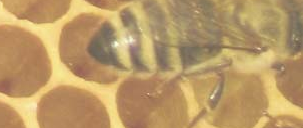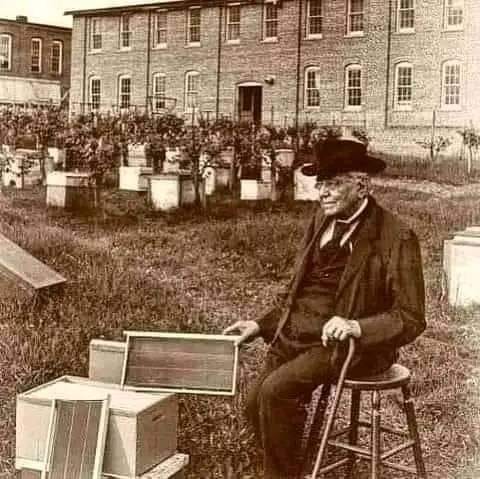
Lorenzo Lorraine Langstroth and the modern beehive
 We
all take the beehive for granted, but it is actually a fairly recent invention, only in use since 1851. One man, Lorenzo Lorraine Langstrot, changed
beekeeping by inventing the movable frame beehive, which he patented in 1852,
We
all take the beehive for granted, but it is actually a fairly recent invention, only in use since 1851. One man, Lorenzo Lorraine Langstrot, changed
beekeeping by inventing the movable frame beehive, which he patented in 1852,
Langstroth (1810-1895) was an American apiarist, clergyman, and
teacher who revolutionized modern beekeeping. Before Langstroth's invention, beekeepers relied on fixed comb hives, which made it difficult to inspect
or harvest honey without damaging the comb or killing the bees. Langstroth's innovation was to create a hive with removable frames that could be
easily lifted out, allowing beekeepers to inspect the hive, manage the bees, and harvest honey without causing harm. By using frames with the correct spacing, Langstroth's hive design allowed bees to build their combs naturally while still
allowing beekeepers to easily manage the hive.
Langstroth's hive design
was based on his observations of bee behavior, particularly the "bee space," which is the distance that bees will naturally leave between combs to
move around the hive.Bees fill it with the space propolis if it is not at least 5 millimeters. But it must also not be greater than 9 millimeters or
the bees will build a wax honeycomb.
Langstroth was also one of the first beekeepers to sell Italian bees in the United States, promoting them
due to their productivity.
Langstroth's invention became widely adopted in beekeeping and is still in use today. He also
wrote several books on beekeeping, including "Langstroth on the Hive and the Honey Bee," which became a classic and influential text in the field.
Today, Langstroth is recognized as one of the most important figures in modern beekeeping and his contributions have helped make beekeeping a more
sustainable and productive industry.
Related information
- A Beekeeper's Hive Explained
- Glossary of honey terms
- The history of honey and beekeeping
- Who's Who in the Hive - Bees Lifecycle
- The history of honey and beekeeping
- Lifecycle of the honeybee
- Hive Collapse Syndrome
- Is it a honeybee or a yellowjacket?
- Killer Africanized bees what and where are they?